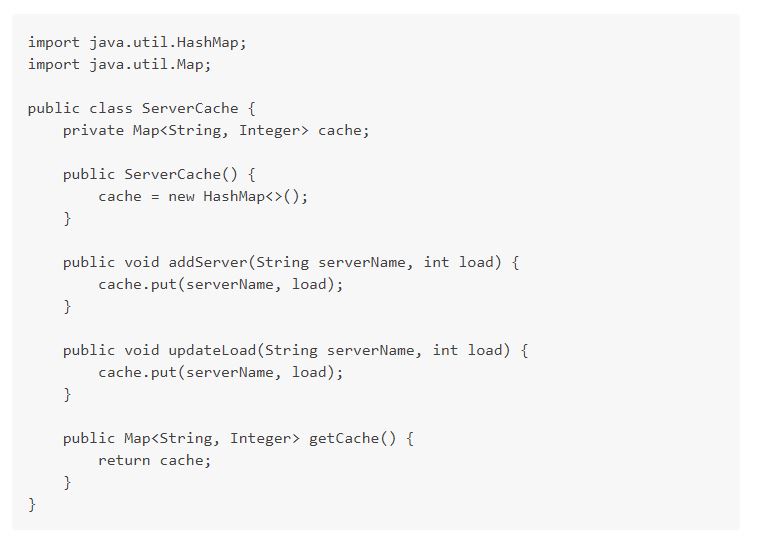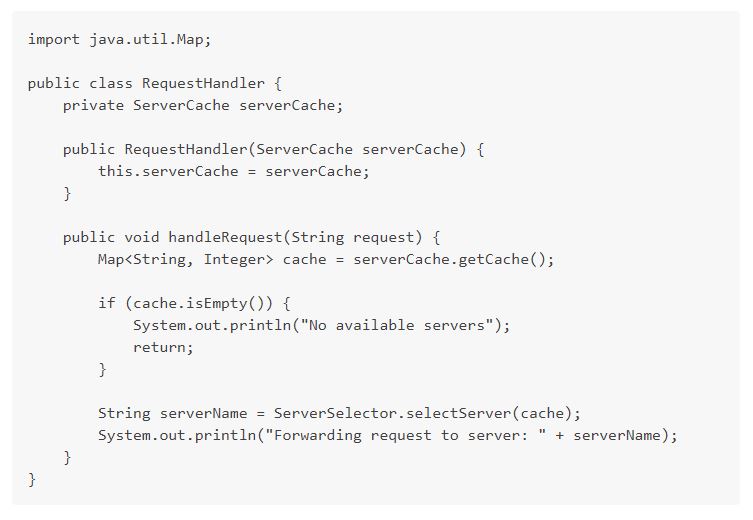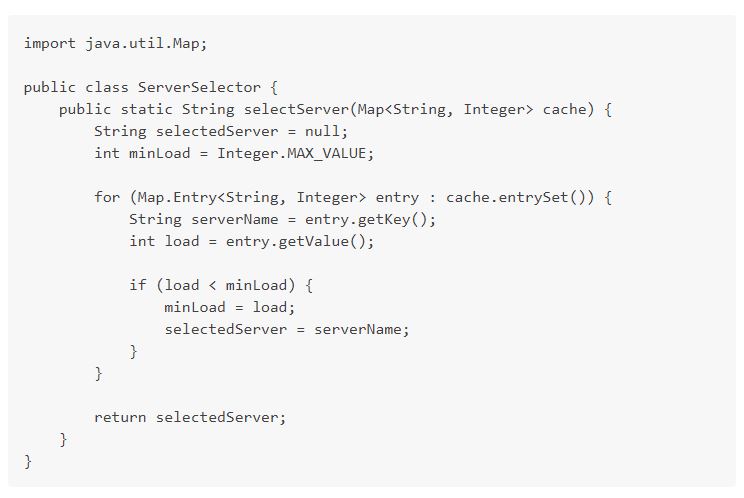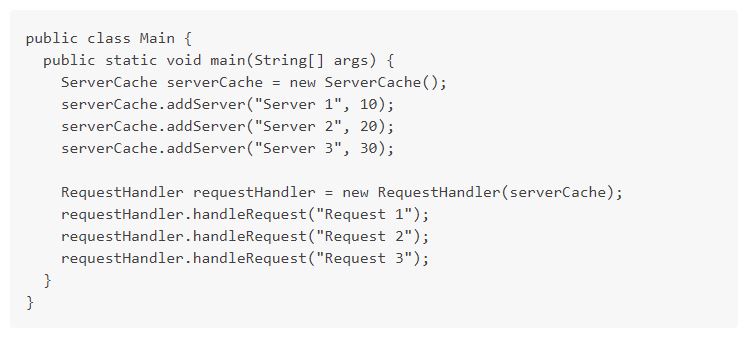A load balancer is an essential component of a distributed system that distributes incoming traffic across multiple servers to improve system performance, reliability, and availability. In this article, we will create a simple load balancer in Java using an in-memory database for cache and other components.
Before we start writing the code, let’s go over the architecture of our load balancer. The load balancer will have the following components:
- A cache that stores the information about the available servers and their current load.
- A request handler that receives incoming requests and forwards them to an available server.
- A server selector that selects server based on the current load and forwards the request to it.

Cache code for load balancer in Java:
Let’s start by writing the code for the cache. We will use an in-memory database to store information about the available servers and the current load. The cache will be implemented as a simple HashMap that stores server information as key-value pairs.

Code for request handler:
Next, let’s write the code for the request handler. The request handler will receive the incoming requests and forward them to the available server. It will use the ServerCache class to get the information about the available servers and their current load.

Code for server selector:
Finally, let’s write the code for the server selector. The server selector will select a server based on the current load and forward the request to it. In this implementation, the server selector will simply select the server with the lowest load.

Main class for load balancer:
Finally, let’s write a simple main class to bring everything together and test our load balancer.

In this main class, we create an instance of ServerCache and three instances of it. Then, we create an instance of RequestHandler and pass ServerCache instance to it. Finally, we call the handleRequest method three times to stimulate three incoming requests.
The output of this code should be:

As you can see, our simple load balancer distributes incoming requests to the servers based on their current load, with the server having the lowest load receiving the first request. In conclusion, we have successfully implemented a simple load balancer in Java using an in-memory database for cache and other components.
This code can be easily extended to support more advanced features such as load-balancing algorithms, health checks, and dynamic server registration.